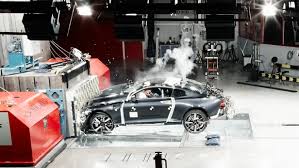
Breaking News
 US Oil Blockade of Venezuela Pushes Cuba Into Economic Collapse
US Oil Blockade of Venezuela Pushes Cuba Into Economic Collapse
 Gold and Silver Surge to New Record Highs, What's Going On?
Gold and Silver Surge to New Record Highs, What's Going On?
 Silver And Copper Are Both Flashing The Same Signal -- And That Is Setting The Stage...
Silver And Copper Are Both Flashing The Same Signal -- And That Is Setting The Stage...
 I Spoke At Turning Point USA - FULL SPEECH
I Spoke At Turning Point USA - FULL SPEECH
Top Tech News
 Perfect Aircrete, Kitchen Ingredients.
Perfect Aircrete, Kitchen Ingredients.
 Futuristic pixel-raising display lets you feel what's onscreen
Futuristic pixel-raising display lets you feel what's onscreen
 Cutting-Edge Facility Generates Pure Water and Hydrogen Fuel from Seawater for Mere Pennies
Cutting-Edge Facility Generates Pure Water and Hydrogen Fuel from Seawater for Mere Pennies
 This tiny dev board is packed with features for ambitious makers
This tiny dev board is packed with features for ambitious makers
 Scientists Discover Gel to Regrow Tooth Enamel
Scientists Discover Gel to Regrow Tooth Enamel
 Vitamin C and Dandelion Root Killing Cancer Cells -- as Former CDC Director Calls for COVID-19...
Vitamin C and Dandelion Root Killing Cancer Cells -- as Former CDC Director Calls for COVID-19...
 Galactic Brain: US firm plans space-based data centers, power grid to challenge China
Galactic Brain: US firm plans space-based data centers, power grid to challenge China
 A microbial cleanup for glyphosate just earned a patent. Here's why that matters
A microbial cleanup for glyphosate just earned a patent. Here's why that matters
 Japan Breaks Internet Speed Record with 5 Million Times Faster Data Transfer
Japan Breaks Internet Speed Record with 5 Million Times Faster Data Transfer
Polestar crumples its carbon-fiber car body in first ever crash tests

"We were really excited about this crash test," says Thomas Ingenlath, Chief Executive Officer at Polestar. "The first crash test of Polestar 1 has been about exploring the unknown. This was a crucial proof point in the development of Polestar 1. We had to know that the ideas and calculations that have gone into building this car were right, and they were."
Polestar shuttled the verification prototype head-on in to a stationary barrier at 56 km/h (35 mph) to replicate the impact of a front-on collision. Its engineers observed this impact closely to see where and how the car, with its carbon fiber body over an underlying steel structure, absorbed the energy. They seem to think it stood up pretty well, reporting the body showed no signs of misalignment after the crash.
"The outcome of this first crash test validates the decision to build the body of Polestar 1 in carbon fibre," says Polestar's Zef van der Putten. "It also confirms that carbon fibre supports the highest safety standards. This is an example of how Polestar spearheads the development of new technology in the Volvo Car Group."
The company began production of its first verification prototypes last month, with customer models of the Polestar 1 expected to hit the streets sometime in 2019. It will carry a price tag of US$155,000, €155,000 in Europe and 1.45 million RMB in China, but customers will also be able to get behind the wheel through catch-all subscription models that cover costs like insurance, maintenance and the lease.

 Advanced Propulsion Resources Part 1 of 2
Advanced Propulsion Resources Part 1 of 2

